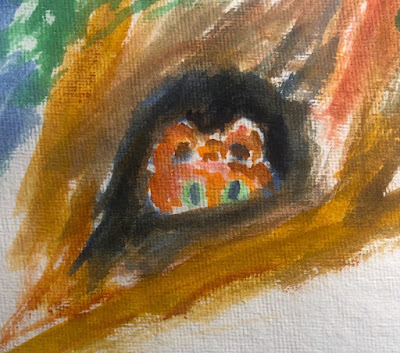 |
| "Solitude," 8 x 10ish watercolor, 140 lb. d'Arches cold press paper |
How do you ease your mind before you go to sleep, eliminating all the violent noise of the day?
I pick up The Pocket Thomas Merton, open it anywhere, and read a few lines. Last night, I came to his thoughts on Solitude.
One quote: ..."turn aside from controversy and put away heavy loads of judgment and censorship and criticism of the who burden of opinions that I have no obligation to cary..."
Another about living in the city from the 1960s (We all now live in a city of media) "...where the radio makes you deaf with spurious news and where the food destroys your life and the sentiments of those around you poison your heart with boredom..."
Or: "The world is the unquiet city of those who live for themselves and are therefore divided against one another in a struggle that cannot end;, for it will go on eternally in hell."
Then you breathe in deeply, think about the solitude of the Great Plains, or the mountains, or your own thoughts.
Out of such stew comes sleep, and today, what was going to be an abstract painting about the Great Plains at end of day, turned out this way, purple, and colors, and the joy of solitude.






















